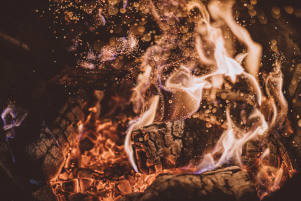
26 Feb 2020 20 things you didn’t know about fire
Fire has been a fundamental tool of mankind throughout history, and civilisation would not have been possible without it. Since the earliest times, human beings have used fire to keep warm and cook their food.
But how much do you really know about fire?
Here are 20 amazing things you probably didn’t know about fire:
- Fire is a chemical reaction that releases energy as light and heat.
- A fire needs three components to exist: heat, oxygen and fuel.
- Assuming a constant supply of fuel, heat and oxygen, a house fire will double in size every minute.
- Fire spreads very fast, and it can take less than 30 seconds for a fire to get out of control.
- The more oxygen available, the hotter the fire. Air is 21 per cent oxygen. By combining pure oxygen with acetylene, you can make an oxyacetylene welding torch which burns at a scorching 3,500 °C.
- The flame is the visible part of the fire that consists of heat-generating gases. The colour of the flame varies according to the temperature of the fire and the material that’s burning.
- Candle flames are blue at the bottom because that’s where they receive the most fresh air, and yellow at the top because the rising fumes from below reduce the air supply to the upper part of the flame.
- A candle flame burns at around 1,000°C.
- Scientists have found human bones over a million years old in caves in South Africa which provide evidence that these humanoids had discovered the art of making fire.
- The ancient Greeks started fire by focusing sunlight onto a small area. The tradition continues to this day with the Olympic torch, which is ignited using a parabolic mirror to concentrate the sun’s rays.
- Dancing on fire is a common ritual performed throughout many cultures.
- The 1666 Great Fire of London destroyed 80 per cent of the city. The upside was that it ended an outbreak of bubonic plague that had caused the deaths of 65,000 people the previous year. The fire killed the bacteria-infested rats and fleas that spread the plague.
- The earth is the only planet in the solar system with enough oxygen to allow fires to burn.
- During wildfires, trees can explode if the water inside them rapidly turns to steam.
- Forest fires move faster uphill than downhill. The steeper the slope, the faster the fire spreads.
- Burning Mountain, a smoldering coal seam 140 miles north of Sydney, Australia, has been burning continuously for 6,000 years according to scientists.
- Flames do not cast shadows.
- You can make water from fire. Place a cold spoon over a candle and watch the water droplets condense on the metal.
- Spontaneous combustion is possible. Some fuel sources can generate their own heat, for example by rotting. This can lead to spontaneous combustion in certain conditions. Pistachio nuts stored in large quantities have been known to spontaneously combust, as have large piles of manure.
- Fire is used in many cultures for decoration, which could range from lighting candles to exploding fireworks. The practice can be traced back to ancient China, where people ignited fireworks to create spectacular fire shows.
Thinking about using a fire to add a warm glow to your home? Why not speak to our friendly team at Fiveways Fires & Stoves? We can advise you on the best fireplaces or stoves so get in touch by phone on 020 8127 4747 or by email at .


